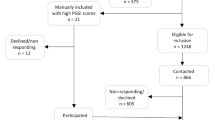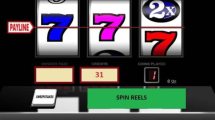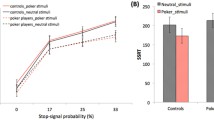Abstract
Twelve problem poker machine players and thirteen horse race gamblers (20 males and 5 females; age range 28–69) completed a series of questionnaires which assessed levels of anxiety, their preferred state of arousal and their motivations to gamble. As predicted, problem poker machine gamblers were found to be more anxious and reported avoiding arousal more frequently than the horse race gamblers. Alternately, problem horse race gamblers were found to prefer heightened levels of arousal and appeared to gamble to achieve these optimal levels of arousal. However, there was no difference between the groups on proneness to boredom. The present results provide evidence which is consistent with the Reversal theory and its application to the field of problem gambling.
Similar content being viewed by others
References
Adkins, B., Kruedelbach, N., Toohig, T.M. & Rugle, L.J. (1988). The relationship of gaming preferences to MMPI personality variables. In: W.R. Eadington (Ed.).Gambling research: Proceedings from the Seventh International Conference on Gambling and Risk Taking, Vol. 5 (pp. 180–192). Nevada: University of Nevada: Rino.
American Psychiatric Association (1987).Diagnostic and Statistical Manual of Mental Disorders, (3rd Edition). Washington, D.C.: Author.
Anderson, G. & Brown, R. (1984). Real and laboratory gambling: Sensation seeking and arousal.The British Journal of Clinical Psychology, 75, 401–410.
Anderson, G. & Brown, R. (1987). Some applications of reversal theory to the explanation of gambling and gambling addictions.Journal of Gambling Behavior, 3, 179–189.
Apter, M.J. (1976). Some data inconsistent with the optimal arousal theory of motivation.Perceptual and Motor Skills, 43, 1209–1210.
Apter, M.J. (1982).The Experience of Motivation: The Theory of Psychological Reversals. London: Academic Press.
Blaszczynski, A.P. & McConaghy, N. (1988). Boredom proneness in pathological gambling.Psychological Reports, 62, 35–42.
Dickerson, M.G., Fabre, J. & Baylis, D. (1985). A comparison of TAB customers and poker machine players. In: McMillen, J. (ed)Gambling in the 80's. Proceedings of the 2nd conference of the National Association for Gambling Studies, Griffiths University, Brisbane.
Farmer, R. & Sundberg, N.D. (1986). Boredom proneness: the development of a new scale.Journal of Personality Assessment, 50, 4–17.
Murgatroyd, S., Rushton, C., Apter, M. & Ray, C. (1978) The development of the telic dominance scale.Journal of Personality Assessment, 42, 519–528.
Sharpe, L. & Tarrier, N. (1993) Towards a cognitive-behavioural model of problem gambling behaviour.British Journal of Psychiatry, 162, 407–412.
Spielberger, C.D., Gorusch, R., Luschene, R., Vagg, P.R. & Jacobs, G.A. (1983).Manual for the State-Trait Anxiety Inventory (Form Y) Palo-Alto: Consulting Psychologists Press.
Author information
Authors and Affiliations
Rights and permissions
About this article
Cite this article
Cocco, N., Sharpe, L. & Blaszczynski, A.P. Differences in preferred level of arousal in two sub-groups of problem gamblers: A preliminary report. J Gambling Stud 11, 221–229 (1995). https://doi.org/10.1007/BF02107116
Issue Date:
DOI: https://doi.org/10.1007/BF02107116




